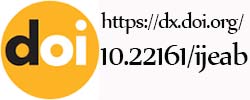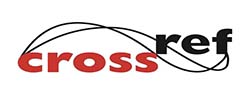Author: Mengistu Lemma, Tegene Negesse, Ajebu Nurfeta
Keyword: Feed resources, Chemical composition and In vitro studies, Feed balance.
Abstract: Availability of major livestock feed resources, their chemical composition and balance between available feed resources and requirements of existing tropical livestock units (TLU) in Kedida Gamela district (Southern Ethiopia) were assessed. A survey was conducted on 100 sample households (HH) and data collected using group discussions, structured questionnaire and personal observations. Furthermore, chemical composition and in vitro dry matter (DM) digestibility (IVDMD) of major feed resources identified (natural pasture and crop residues) were also determined. A total of 28,675 tonnes of DM were produced annually for a total of 40,080 TLU which satisfies only 31.4% of their maintenance requirement. Maize stover and wheat straw contain lowest ash and from agro-industrial by-products noug cake and wheat bran the highest ash content. The highest (p<0.05) crude protein (CP) content among roughages was recorded from natural pasture and the lowest from maize stover, but the rest of feed resources come in between, with no significant differences among them. The highest neutral detergent fiber and acid detergent fiber contents for roughage feeds recorded were from teff straw and maize stover, while no differences were noted (P>0.05) between the agro-industrial by-products. The highest acid detergent lignin content for roughage feed was recorded from maize stover to natural pasture and the highest from agro-industrial by-products was recorded from wheat bran to noug cake. Differences in IVDMD for major feed resources were not significant (P>0.05). The differences in nutrient composition and IVDMD of the feed resources in midland and highland followed similar trend, although there were slight differences in nutrient content and IVDMD of similar feedstuffs from the two altitudinal zones. In conclusion, the main feed resource is crop residues which are of low quality with high fiber content, low digestibility which may result in reduced livestock productivity and disease resistance. Chopping followed by soaking or ammonaition or urea treatment could be suggested to improve quality of the roughages.
| Total View: 3943 | Downloads: 698 | Page No: 31-39 |
Cite this Article:
MLA
Mengistu Lemma, Tegene Negesse, Ajebu Nurfeta, P.(2016).Assessment of Feed Resource Availability and Quality in Kedida Gamela District, Southern Ethiopia. International Journal of Environment Agriculture and Biotechnology(ISSN: 2456-1878).1(1), 31-39
Mengistu Lemma, Tegene Negesse, Ajebu Nurfeta, P.(2016).Assessment of Feed Resource Availability and Quality in Kedida Gamela District, Southern Ethiopia. International Journal of Environment Agriculture and Biotechnology(ISSN: 2456-1878).1(1), pp.31-39.
Mengistu Lemma, Tegene Negesse, Ajebu Nurfeta. 2016."Assessment of Feed Resource Availability and Quality in Kedida Gamela District, Southern Ethiopia". International Journal of Environment Agriculture and Biotechnology(ISSN: 2456-1878).1(1):31-39.
Mengistu Lemma, Tegene Negesse, Ajebu Nurfeta."Assessment of Feed Resource Availability and Quality in Kedida Gamela District, Southern Ethiopia", International Journal of Environment Agriculture and Biotechnology,vol.1,no. 1, pp.31-39,2016.
@article { mengistulemma2016assessment,
title={Assessment of Feed Resource Availability and Quality in Kedida Gamela District, Southern Ethiopia},
author={Mengistu Lemma, Tegene Negesse, Ajebu Nurfeta , R},
journal={International Journal of Environment Agriculture and Biotechnology},
volume={1},
year= {2016} ,
}
























